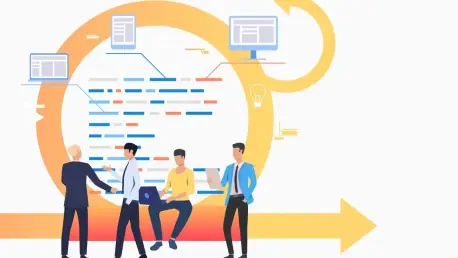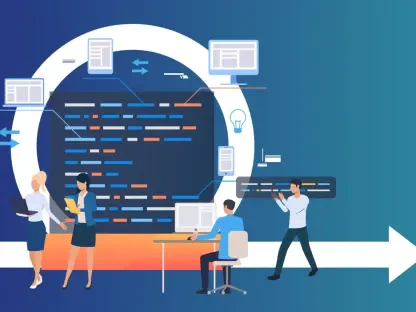The Current State of IT Project Delivery and Agile Practices
In the ever-evolving landscape of IT project delivery, a staggering statistic casts a long shadow over the industry: only 31% of IT projects achieve success, according to the Standish Group’s CHAOS 2020 report, highlighting a persistent challenge despite the dominance of Agile methodologies like Scrum. This sobering figure, even after decades of Agile’s influence in software development and IT management, signals that underlying issues remain unresolved, prompting a critical examination of current practices.
Scrum, as a cornerstone of Agile, has been instrumental in fostering iterative development and cross-functional teamwork since its inception. Its widespread adoption across enterprises of all sizes highlights its value in breaking down complex projects into manageable sprints. However, the consistent underperformance of IT initiatives suggests that relying solely on this framework may no longer suffice in addressing the dynamic needs of modern organizations, pushing leaders to question its effectiveness.
The significance of Agile cannot be understated, as it has reshaped IT management by prioritizing adaptability over rigid planning. Yet, with nearly half of projects classified as “challenged”—running over budget, behind schedule, or incomplete—and a notable 19% failing outright, the industry faces a pressing need to evolve. This backdrop of mixed outcomes sets the stage for a deeper exploration into why traditional Agile practices are faltering and what alternatives might better serve today’s digital enterprises.
Limitations of Scrum in Modern IT Environments
Key Shortcomings and Pain Points
Scrum, despite its historical impact, reveals several critical flaws that hinder its application in contemporary IT settings. Ineffective sprint planning often leads to unrealistic goals, leaving teams scrambling to meet deadlines without addressing core priorities. Additionally, the disconnect between story points and actual financial progress creates a gap in understanding the real cost of development, making it difficult to justify investments to stakeholders.
Another pressing issue lies in the accumulation of technical debt, often exacerbated by misaligned priorities during daily stand-ups. When urgent tasks overshadow long-term quality considerations, the resulting shortcuts can compromise system stability over time. Furthermore, delayed learning from retrospectives means that valuable insights are not applied promptly, stunting team growth and perpetuating inefficiencies in subsequent cycles.
These shortcomings collectively obstruct the translation of IT strategies into tangible business value. Real-world experiences across various sectors reveal that Scrum’s rigid structure can stifle innovation when teams focus more on adhering to ceremonies than solving business problems. This misalignment prompts a growing realization among IT leaders that a more adaptive approach is necessary to bridge the gap between effort and measurable outcomes.
Industry Data and Growing Dissatisfaction
Data from the 17th State of Agile Report paints a telling picture of Scrum’s diminishing effectiveness, even as it remains the most widely adopted Agile framework. A significant portion of respondents expressed frustration over its inability to scale across complex, multi-team environments, highlighting a disconnect between its theoretical benefits and practical application. This dissatisfaction signals a broader shift in sentiment among professionals who find the framework lacking in flexibility for today’s challenges.
While Scrum was revolutionary when introduced, its static nature struggles to accommodate the intricate demands of digital enterprises in 2025. The rapid pace of technological change, coupled with the need for cross-functional integration, exposes the framework’s limitations in delivering consistent value. As organizations grapple with hybrid models and global teams, the once-innovative approach appears increasingly outdated, unable to keep up with evolving expectations.
This growing unrest is not merely anecdotal but backed by industry feedback that points to a need for reinvention. Reports indicate that many organizations are exploring hybrid or alternative methodologies to address gaps left by Scrum, reflecting a consensus that clinging to traditional practices risks further project delays and missed opportunities. This trend underscores the urgency for IT leaders to rethink their reliance on a single framework.
Challenges in IT Project Execution Beyond Methodology
The persistent underperformance of IT projects extends far beyond the limitations of any one methodology like Scrum. At the heart of these failures lie flawed execution strategies that fail to align with overarching business goals. Even with advanced tools and technologies at their disposal, many organizations stumble due to an inability to adapt processes to real-world complexities, resulting in wasted resources and frustrated stakeholders.
Rigid project-based thinking compounds these challenges by enforcing fixed deadlines and budgets that often ignore the fluid nature of software development. This outdated mindset clashes with the dynamic requirements of modern IT environments, where user needs and market conditions can shift unexpectedly. The resulting misalignment between project deliverables and business outcomes creates a cycle of disappointment that methodologies alone cannot resolve.
Ironically, even Agile teams, designed to embody flexibility, frequently require external coaching to navigate their own frameworks. This dependency highlights a deeper issue of over-reliance on process over practical problem-solving, as teams struggle to internalize the principles of adaptability. Such complexities reveal that the root of IT project struggles lies in cultural and strategic missteps, demanding a broader reevaluation of how delivery is approached.
The Need for a Shift to Continuous Value Delivery
A transformative shift is underway in the IT industry, moving away from traditional project-based delivery toward a continuous “flow of value” that prioritizes user and business needs. This approach discards the constraints of predetermined timelines and budgets, instead focusing on delivering incremental improvements that align directly with stakeholder expectations. The emphasis on ongoing value creation marks a departure from the finite, often rigid structures of the past.
Adaptability and responsiveness are now paramount, as organizations must pivot quickly to address emerging trends and customer feedback. This is particularly critical in the context of rapidly advancing technologies such as AI and automation, which require delivery models that can integrate new capabilities without disrupting existing workflows. Continuous delivery ensures that IT efforts remain relevant, providing a steady stream of benefits rather than sporadic, large-scale releases.
The move toward this model also reflects a growing recognition that success is measured by outcomes, not adherence to a schedule. By focusing on delivering value in smaller, more frequent increments, teams can better gauge impact and make adjustments in real time. This paradigm offers a path to overcoming the historical pitfalls of project underperformance, positioning IT as a true driver of business growth.
Introducing the Vroom Agile Framework™ as a Next-Generation Solution
Emerging as a compelling evolution of Agile principles, the Vroom Agile Framework™ draws inspiration from the precision and speed of Formula 1 racing to redefine IT delivery. Unlike traditional frameworks that emphasize iteration, this approach prioritizes acceleration, ensuring that teams move swiftly from concept to value with minimal friction. It builds on Agile’s core tenets, such as valuing individuals over processes, while addressing modern pain points with innovative solutions.
Key features of the Vroom Agile Framework™ include real-time visibility into all project types—whether Agile, Hybrid, or Waterfall—through a cloud-based platform that enhances transparency. It also introduces meaningful metrics that directly link effort to business outcomes, providing clarity on progress and impact. Additionally, detailed logs ensure traceability, while an intuitive interface boosts adoption and productivity across diverse teams, making it a practical tool for complex environments.
This framework stands out by aligning IT initiatives with strategic business goals, offering a level of integration that traditional methodologies often lack. Its focus on actionable insights and streamlined workflows empowers teams to deliver results faster, without sacrificing quality. For CIOs seeking a way to break free from the constraints of outdated practices, this solution presents a forward-thinking alternative tailored to the demands of the digital era.
The Future of Agile Practices in an AI-Driven Era
As the IT landscape continues to transform, Agile practices must evolve to prioritize intelligent, outcome-focused delivery over adherence to traditional timelines. The integration of AI, automation, and expansive digital ecosystems is reshaping how value is created, demanding models that can keep pace with accelerated innovation cycles. This shift underscores the need for frameworks that support rapid adaptation and seamless scalability.
Emerging trends point to a future where transparency and speed are non-negotiable for maintaining competitive advantage. AI-driven insights are already enabling predictive analytics for project risks, while automation streamlines repetitive tasks, freeing teams to focus on strategic priorities. These advancements necessitate delivery approaches that can incorporate cutting-edge tools without disrupting core operations, a challenge that legacy Agile methods often fail to meet.
For CIOs, staying ahead in this environment means embracing methodologies that facilitate faster, more informed decision-making. The ability to deliver tangible results amid technological disruption will define leadership success in the coming years. As digital transformation accelerates, the adoption of next-generation Agile practices becomes not just an option, but a critical imperative for sustaining relevance and driving growth.
Conclusion: A Call to Action for CIOs
Reflecting on the insights gathered, it is evident that the persistent underperformance of IT projects has deep roots in outdated practices like Scrum, which struggle to meet the complexities of modern digital enterprises. The critical limitations of traditional Agile methodologies have become a barrier to translating effort into meaningful business value, while broader execution challenges compound the issue.
Looking ahead, CIOs are encouraged to take decisive action by piloting innovative frameworks such as the Vroom Agile Framework™, which has demonstrated potential to deliver smarter, faster results. By embracing continuous value delivery and leveraging real-time visibility and outcome-focused metrics, IT leaders can position their organizations to thrive amid technological disruption. This proactive step toward reimagining Agile practices offers a pathway to not only address past shortcomings but also build a resilient foundation for future innovation.









